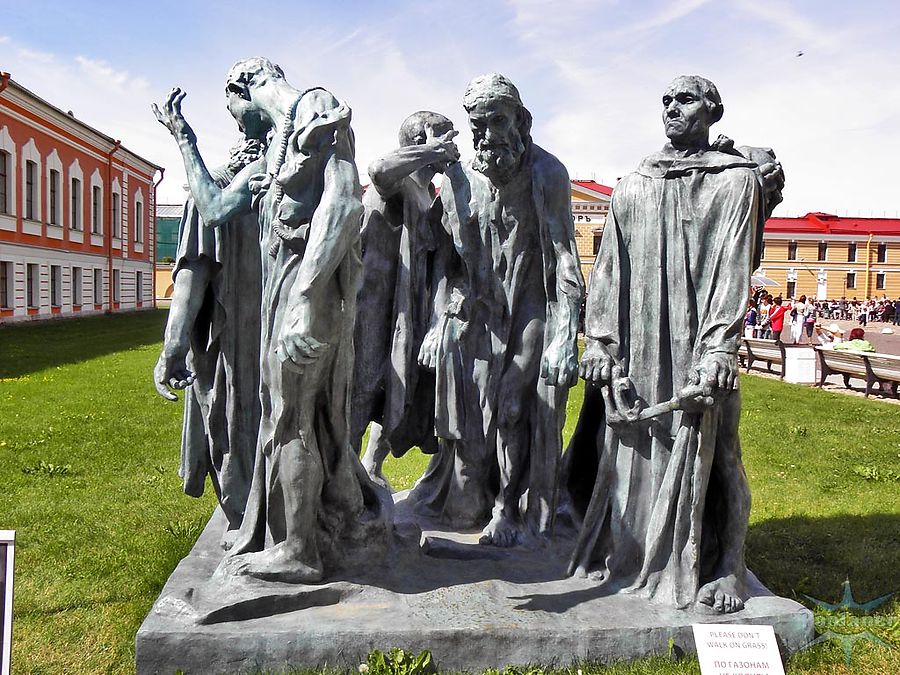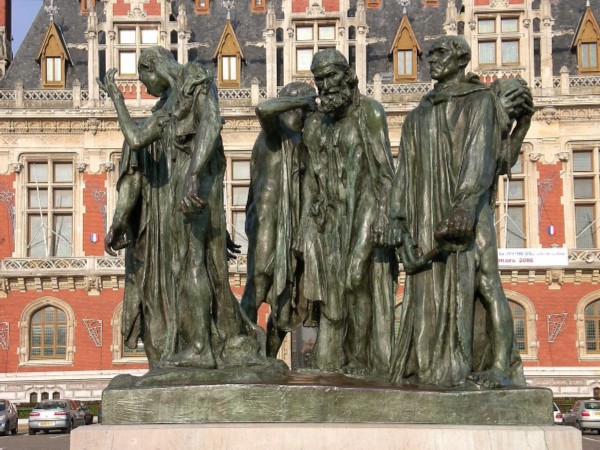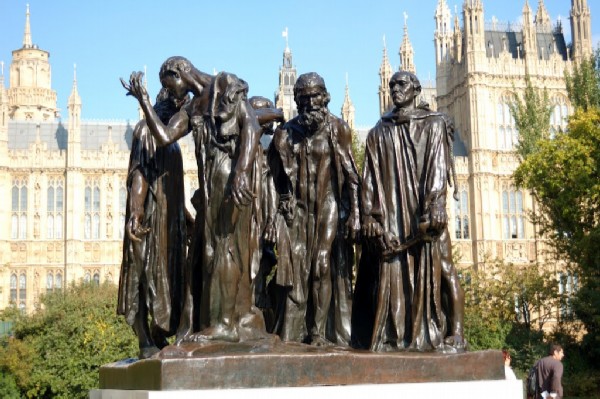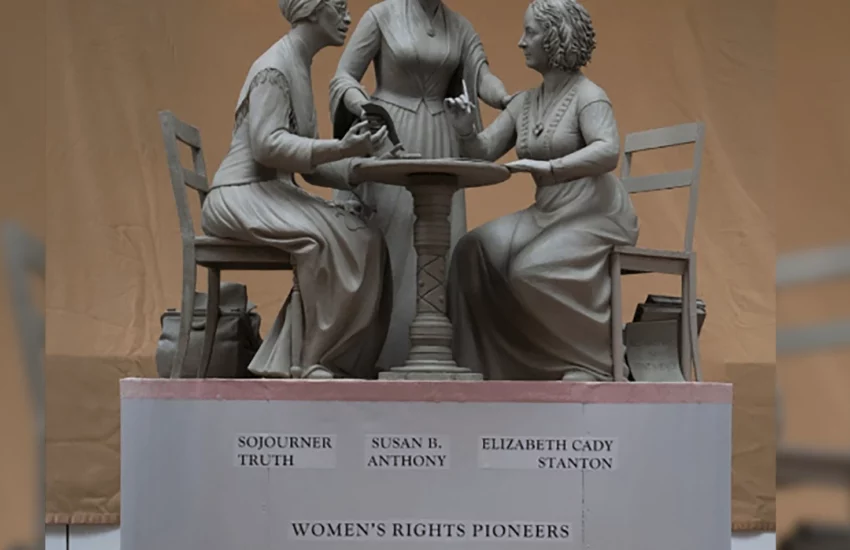Citizens of Calais

Citizens of Calais Historical basis
The sculptural composition Citizens of Calais tells about one of the episodes of the Hundred Years War, which was fought between England and France in the period from 1337 to 1453. The events depicted date back to 1346, when the French fortress of Calais, located on the banks of the Pas de Calais, was attacked by the British.
The key location of the fortress (this is the closest French settlement to England, in a straight line here to the English coast is only 34 kilometers) made the British fiercely besiege the fortress for almost a whole year. The inhabitants of the city, despite the terrible hunger, held out under the onslaught of the enemy, but the moment came when the exhausted people simply could not hold the defense.
The English King Edward III demanded that, when surrendering Calais, six of the richest and most noble citizens bring him the keys in an extremely humiliating form: they had to go out without a top dress, in rags, with ropes tied around their necks.
In this case, the English monarch promised to pardon the rest of the townspeople, but these six were expected to be severely executed. The sight of the emaciated townspeople, who retained their dignity in the face of death, aroused compassion from Edward’s wife, Queen Philippa. At that time she was pregnant, and in the name of the unborn child, the woman begged pardon from her husband, the king, for all six citizens going to their deaths.

History of creation
A controversial episode from history – after all, the city was handed over to the enemy – for a long time was not reflected in the monuments. The idea to perpetuate the memory of six townspeople going to their deaths in the name of their compatriots arose only in the middle of the 19th century, but for a long time it remained only a plan. The impetus for its implementation was a tragic page in the history of France – the defeat in the Franco-Prussian War.
It was then that the idea that you can be defeated – but not broken, began to demand its real embodiment. The case more than five hundred years ago was just in line with the mood of that time. A subscription was organized to raise funds for the creation of a monument, and the mayor of Calais turned to the illustrious master of his time – Auguste Rodin.
Unfortunately, the collected funds were not enough to create a monumental monument, so the customer asked the sculptor to erect a monument to only one of those six – Eustache de Saint-Pierre, who was the first to volunteer for death and led his comrades along with him. But Rodin, captured by the enormity of the proposed topic, rejected such a proposal: “How can I compromise? Six citizens didn’t.” So there was a monument to all six.

Artistic features
The main requirement of the author was to place the sculptural group not on a traditional high pedestal, but at ground level: this was innovation and the power of artistic design. The interaction of static and dynamic is noteworthy: the emotional state of the two characters is shown through expressive movements, we can judge the feelings of the four characters mainly by facial expressions, since their postures indicate a terrible doom.
The sculptural group is characterized by a high degree of elaboration of characters: each of the people depicted by Rodin is an individual, we can definitely talk not only about age, but also about the emotional make-up, temperament, and other personal characteristics.
At the same time, while maintaining the pronounced individuality of each individual character, the viewer still sees a community of people, a single whole. The compositional features of the sculptural group make it possible to maximize the plot: we see people at the moment of the highest tension, when their fate, as it seems to them, has already been decided, and they have to accomplish the most important thing in life – to die for the sake of others.

replicas
- It is often erroneously stated that in addition to the original sculptural group in the city of Calais, there are two copies installed in Paris and London. In fact, the number of sculptural groups is much larger.
- Under French law, no more than twelve original casts of this work by Rodin may be made. Since these casts are not copies, but represent the original work, it is more appropriate to attribute the definition of “replica” to them.
- At the moment, all twelve replicas of the author’s sculpture have been made.
- The first composition of the group of six figures, cast in 1895, is still located in the city of Calais.



